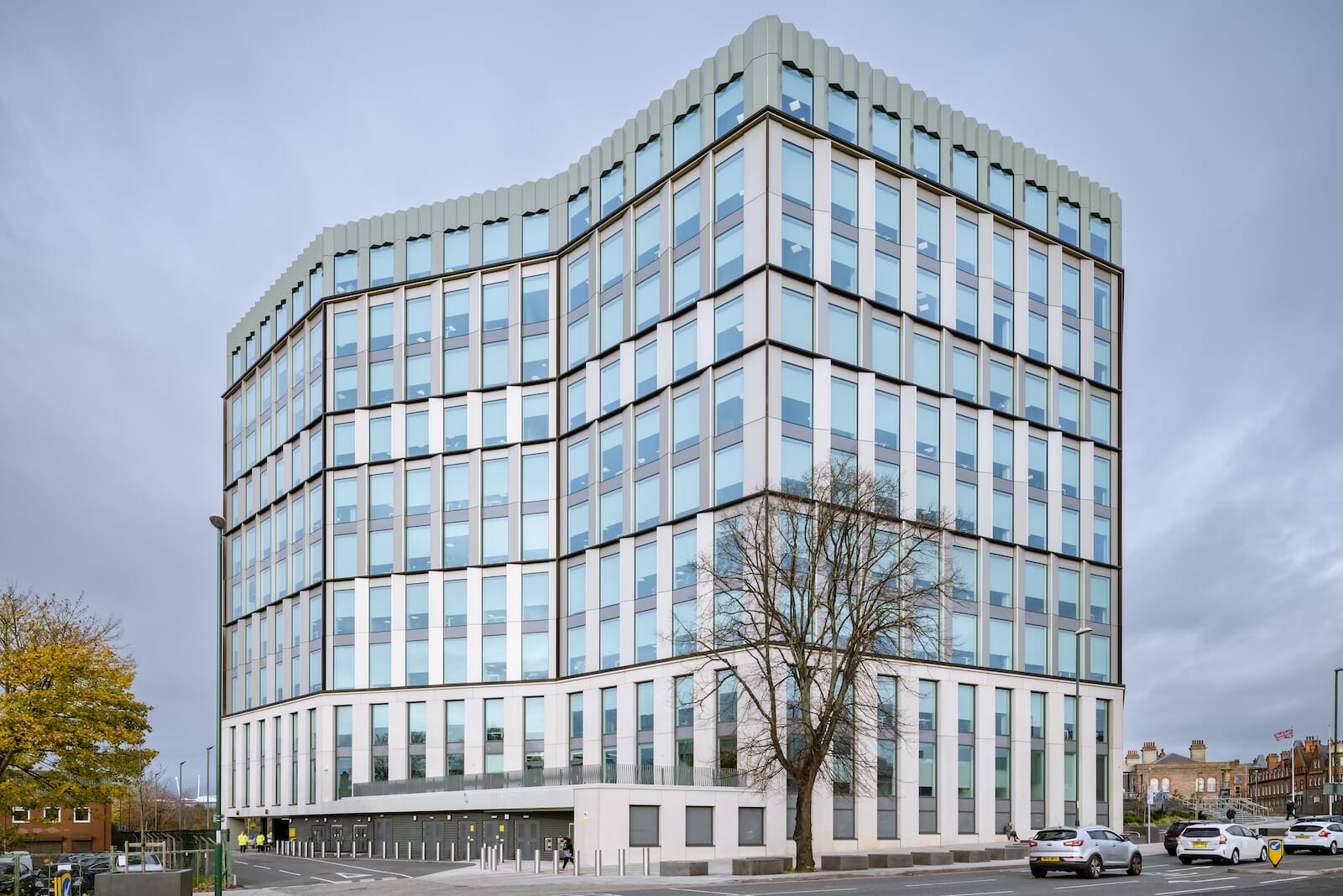A step-by-step guide to obtaining BREEAM accreditation
What if your next construction project could do more than just meet regulations? What if you could find a way to lower your operational costs, boost your building’s value, and visibly demonstrate your commitment to sustainability? That’s where BREEAM accreditation comes in.


BREEAM is the gold standard for sustainable building, providing clear benchmarks for everything from energy efficiency and health & wellbeing to transport and waste. And with almost three million BREEAM-registered buildings across 104 countries, there’s no better time to consider obtaining BREEAM certification for your next project.
We’ve put together this helpful step-by-step guide to the BREEAM certification process, so you can start planning your next project with BREEAM in mind.
Why obtain BREEAM certification?
BREEAM (Building Research Establishment Environmental Assessment Methodology) is the world’s leading sustainability assessment method for buildings and infrastructure. By achieving BREEAM certification, you are demonstrating that your project meets best practice standards across a wide range of environmental and social performance categories.
The benefits of obtaining BREEAM certification include:
- Compliance with local and international building standards
- Reduced carbon emissions throughout the building’s life cycle
- Lower operating costs when it comes to energy and water usage
- Improved health and wellbeing for building occupants
- Increased property value for investors and buyers
- Enhanced marketability and competitiveness
- Positive business image and community perception
Discover more about the benefits of BREEAM-certified buildings in our dedicated blog post.

How to achieve BREEAM certification
1) Select the appropriate BREEAM scheme
The first step to obtaining BREEAM accreditation is determining which scheme is most applicable to your project. You can do this by determining the type and stage of development:
- BREEAM UK New Construction – for all new build, design, and construction projects in the UK (RIBA 1 to 6)
- BREEAM UK Refurbishment & Fit-Out – for upgrading or renovating existing buildings (RIBA 1 to 6)
- BREEAM International In-Use – for operational buildings that are aiming to improve their ongoing performance (RIBA 7: Use)
- BREEAM International – for new construction and refurbishment projects outside the UK *
- BREEAM Bespoke – for New Construction or Refurbishment & Fit-Out projects that fall outside the standard BREEAM schemes and require a more tailored approach
* The BREEAM International scheme is not applicable for the National Scheme Operators (NSOs), including Netherlands, Spain, Norway, Sweden, and Germany, as these countries have their own BREEAM Scheme.
Choosing the correct scheme early on will allow you to integrate the specific requirements for certification into the project from the outset and avoid costly redesigns later down the line.
2) Appoint a licensed BREEAM Assessor
Next, you’ll need to appoint a licensed BREEAM Assessor to carry out the assessment of your building. They will guide you through the entirety of the process for certification, from registering your project with the BRE to the final submission.
We also recommend working alongside a BREEAM Accredited Professional (AP). A BREEAM AP takes things one step further by providing advice and guidance on improving your building’s overall sustainability. They can help your team embed sustainability principles into each design stage, identify opportunities for additional credits, and reduce risks to your target rating.
Find out more about the roles and responsibilities of each professional in our BREEAM AP vs Assessor blog.
3) Undertake a BREEAM pre-assessment
A BREEAM pre-assessment is the first step of your BREEAM journey, which predicts your likely BREEAM score based on your proposed designs.This type of assessment is not part of the formal submission but it is a crucial initial step, as it can help you:
- Set achievable targets that will aid you in obtaining your desired rating
- Identify potential risks and missed opportunities
- Ensure that key credits are incorporated into your project brief
- Align your whole team around the sustainability strategy
We can conduct BREEAM pre-assessments for all types of buildings, which allows us to determine the environmental impact of your development project before any on-site work begins. From there, we’ll present you with a full pre-assessment report that contains actionable insights on improving your predicted BREEAM rating. Read more about what’s involved in a BREEAM pre-assessment in our step-by-step guide.
4) Register your project for assessment
As part of their services, your BREEAM Assessor will register your project for assessment with the BRE. This should be done as early as possible, ideally prior to the conceptual design stage (RIBA 2). If you appoint us as your BREEAM Assessor, we will handle the registration on your behalf, so you can focus on completing your project to the highest possible standard.
If you’re applying for the BREEAM In-Use scheme, you can register your assets directly via the BREEAM online platform, or ask your BREEAM In-Use Assessor to complete the registration for you.
5) Compile evidence & submit for certification
The final stage of the BREEAM accreditation process is getting certified. Most BREEAM schemes have two main stages:
- Design stage certification
- Post-construction stage certification
Your BREEAM assessor will submit all the evidence of compliance to BRE for quality assurance (QA) and certification. Once approved, the BRE will issue your official BREEAM certificate and list your project on GreenBookLive – a public directory of certified assets.
If you’re being assessed under BREEAM In-Use, you’ll need to request a certification update once every 3 years, which must be verified by a certified BREEAM auditor.
BREEAM accreditation checklist
We’ve compiled a simple checklist to help you prepare your project for assessment:
- Identify the relevant BREEAM scheme for your project
- Appoint a licensed BREEAM Assessor
- Consider appointing a BREEAM Accredited Professional (AP)
- Conduct a pre-assessment to determine your potential BREEAM score
- Register your project with BRE
- Integrate BREEAM requirements into your design brief
- Gather evidence to support your assessment
- Submit your project for design stage and/or post-construction stage certification
- Review feedback and address any issues raised by BRE QA
- Receive your official BREEAM certificate and listing on GreenBookLive
- (For BREEAM In-Use) Schedule your reassessment every 3 years to renew your certification
Supporting you throughout your journey to certification
Achieving BREEAM certification can be a complex process. Our expert team is here to guide you throughout the entirety of the BREEAM assessment process, from conducting early-stage BREEAM pre-assessments throughout to issuing you with your final certification, helping to make the journey to certification much smoother.
We offer a comprehensive range of BREEAM assessment schemes for all building types and have helped some of the biggest names in the construction industry to obtain their desired rating. Whether you’re aiming for BREEAM Outstanding or simply need a Pass grade, we’ll make sure you’re best placed to achieve your target score.
Get in touch with us today to discuss your BREEAM requirements.
Encon Associates were instrumental in my SEN School Project achieving a BREEAM Excellent rating. In particular, Glenn Miles’ interest in assisting each member of the project team to achieve their individual credits, matched with his expertise in the field, have meant that this particular project had the highest credit score for any school project for us in the UK.



